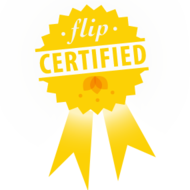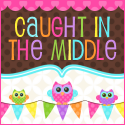Inevitably, as soon as we finish explaining how the continents could have drifted apart, the questions start rolling in about how this could have happened. Luckily, the next section in our notes and our next "lab" answers just that question!
The process of seafloor spreading is what causes the continents to slowly drift apart. Running down the middle of the ocean is a mid-ocean ridge - a crack between two tectonic plates. At the mid-ocean ridge, the fiery hot convection currents of magma below the crust exert intense pressure and push the two plates slightly apart. The magma oozes into the crack that is created and creates new seafloor and the ocean becomes gradually wider, forcing the two continents apart.
On the opposite end of the plate, the pressure collides the plate with another plate. Generally, these plates converge and one dips below the other. As it delves deeper into the mantle, it is heated and melts back into magma, thus continuing the cycle.
In order to model this phenomenon, we created a simple model out of construction paper, glue and masking tape. I prepared ahead of time by cutting out brown construction paper to model the tectonic plates. I cut 9" x 12" paper into 4" x 4" squares. Each group will need four of these squares. For each group, take two of the squares and tape them together with masking tape end to end. The other two will stay separate.
We created mock magma by combining white school glue with red and yellow food dye and mixing it with a popsicle stick in a small paper cup. The students then spread the magma in a thick stripe down the middle of the large sheet of white paper. We placed the taped together plates and the loose plates over the strip of magma touching end to end with the intersection over the strip. At the far ends of the brown paper, we taped them loosely to the white sheet just to hold them in place. Finally, we were ready to model the process.
The students slowly slide the plates apart over the magma and watch as the magma rushes in to fill the crack. As the magma cools, new seafloor is formed and the ocean is wider. On the other side of the plates, they meet another plate and the intersection either rises like a ridge or mountain range, or it dips below another plate. Both of these possible outcomes are shown on the model.
I provided the students with a sheet of labels to apply to their diagram. They simply cut out the labels and applied them where they belong. Below are some images of the works in progress, and a completed sample:
Subscribe to:
Post Comments (Atom)













0 comments:
Post a Comment